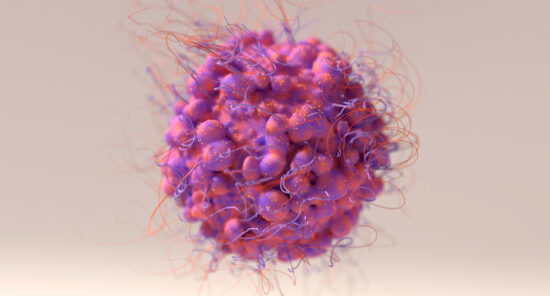Credit: Original article published here.
Different biological immunotherapies for the treatment of psoriasis are associated with variable delays in progression to inflammatory arthritis, according to a retrospective study in Lancet Rheumatology. In particular, inteurleukin (IL)-12/23 and IL-23 inhibitors demonstrated the greatest benefit in time to progression to inflammatory arthritis compared with other immunotherapies.
Shikha Singla, MD, and colleagues used electronic health records data to identify adults in the US who were newly prescribed a biologic therapy for psoriasis. Treatments included in the study were:
- Tumor necrosis factor (TNF) inhibitor
- IL-17 inhibitor
- IL-23 inhibitor
- IL-12/23 inhibitor
Patients were included in the study if they had at least two diagnostic codes for psoriasis (>30 days apart) and a newly prescribed biologic between Jan. 1, 2014, and June 1, 2022. In total, 15,501 patients with psoriasis met inclusion criteria. The mean age was 50.2 years and 54.2% of patients were women. White patients made up 72.1% of the cohort.
The time to incident inflammatory arthritis was defined by the first occurrence of a diagnostic code for psoriatic arthritis or other inflammatory arthritis following treatment with immunotherapy. The time-dependent risk was calculated with weighted Cox proportional hazards regression—anti-TNF exposure was the reference, and the researchers adjusted for the patients’ demographic and clinical factors. In addition, the team conducted sensitivity analyses to evaluate incident cases of psoriasis, increased exclusion periods for prevalent cases of inflammatory arthritis, drug switching, and more stringent diagnostic thresholds.
The overall rate of progression to inflammatory arthritis in this population was 6.3%, or 15,501 patients. The cumulative incidence of arthritis development was 2.6 cases per 100 person-years. Following multivariable regression analyses, the researchers reported a lower risk of progression in patients treated with IL-12/23 and IL-23 inhibitors compared with TNF inhibitors. The adjusted hazard ratio (HR) for IL-12/23 was 0.58 (95% confidence interval [CI] 0.43–0.76), and for IL-23 the HR was 0.41 (95% CI 0.17–0.95). The risk of progression with the use of IL-17 inhibitors was not significantly different than that of TNF inhibitors (HR 0.86; 95% CI 0.54–1.38).
The findings for IL-12/23 inhibitors persisted in all sensitivity analyses, and for IL-23 inhibitors, results persisted in 3 of 6 sensitivity analyses: when a higher diagnostic threshold was used for incident arthritis and when excluding patients who developed arthritis within 3 or 6 months, respectively, after first biologic prescription.
Based on these findings, the authors concluded, “In this large cohort study of patients with psoriasis, treatment with IL-12/23 inhibitors or IL-23 inhibitors was associated with reduced risk of progression to inflammatory arthritis compared with TNF inhibitors.” The authors added that “prospective observational cohorts with disease activity measures and pooled analyses of previous randomized trials are required to confirm these findings.”
Colchicine Does Not Relieve OA-Related Hand Pain Compared With Placebo
A randomized, placebo-controlled clinical trial did not find a significant clinical benefit of colchicine twice daily for pain relief in patients with osteoarthritis (OA) of the hand. Notably, treatment with colchicine was also associated with greater incidence of adverse events (AEs). These findings were published in Lancet Rheumatology.
Colchicine is a medication used for the treatment of gout. It as anti-inflammatory properties, but there is limited evidence of its benefit for treatment of other conditions.
This single-center study enrolled 100 patients with symptomatic hand OA and finger pain who were treated at an outpatient clinic in Denmark. Inclusion criteria was a pain rating of at least 40 mm out of 100 mm on the visual analog scale (VAS). The target hand was the hand with the most severe finger pain at baseline. The study was double-blinded, and patients were randomized to either 0.5 mg colchicine or placebo taken orally, twice daily for a period of 12 weeks.
Patients were stratified according to sex, whether their age was ≥75 years, and whether their body mass index (BMI) was ≥30 kg/m2. The primary endpoint was changes in target hand pain at 12 weeks, assessed via VAS. The researchers pre-specified a minimal clinically important difference of 15 mm in the intention-to-treat population. Safety was assessed at 12 weeks. Fifty patients were assigned to each treatment group, and all participants completed the study. The mean age was 70.9 years, and 69% of participants were women.
At 12 weeks, the mean change in finger pain from baseline in the colchicine arm was –13.9 mm (standard error [SE] 2.8); the mean change was –13.5 mm (SE 2.8) in the placebo arm. The difference between groups was not statistically significant (–0.4 mm; 95% confidence interval –7.6 to 6.7; P=.90).
Regarding AEs, 76 events in 36 patients (72%) occurred in the treatment group, with one serious AE (migraine leading to hospital admission). Comparatively, 42 events in 22 patients (44%) occurred in the placebo group. There were two serious AEs in the placebo group: cholecystitis and elevated alanine aminotransferase concentrations, which occurred in the same patient.
In summary, the authors wrote, “In people with painful hand osteoarthritis, treatment with 0.5 mg of colchicine twice day for 12 weeks did not effectively relieve pain, and treatment with colchicine was associated with more adverse events.”


